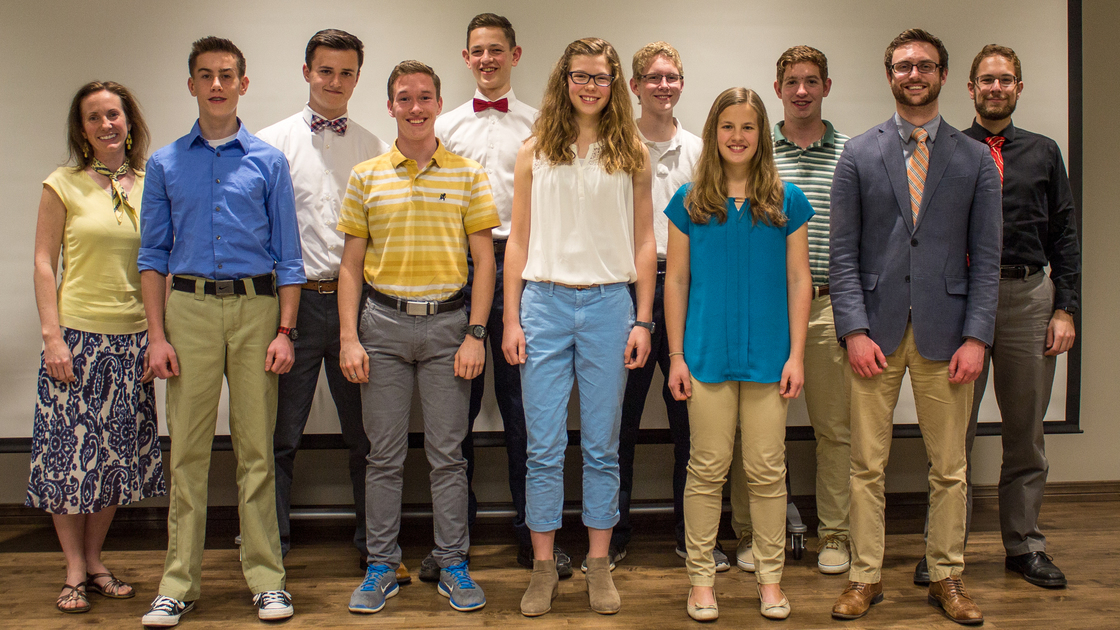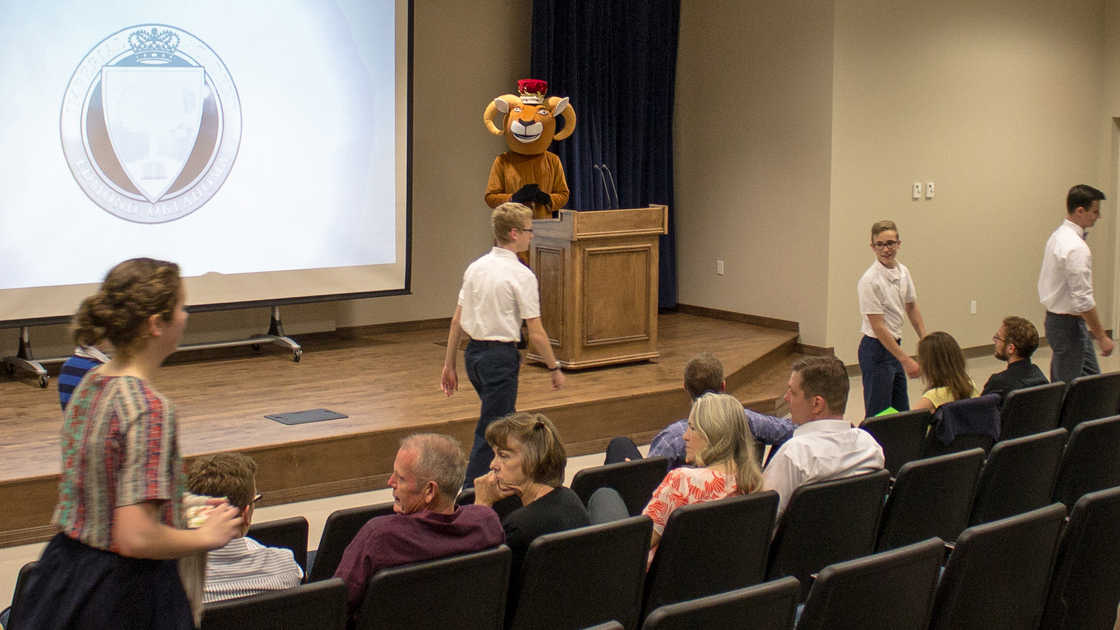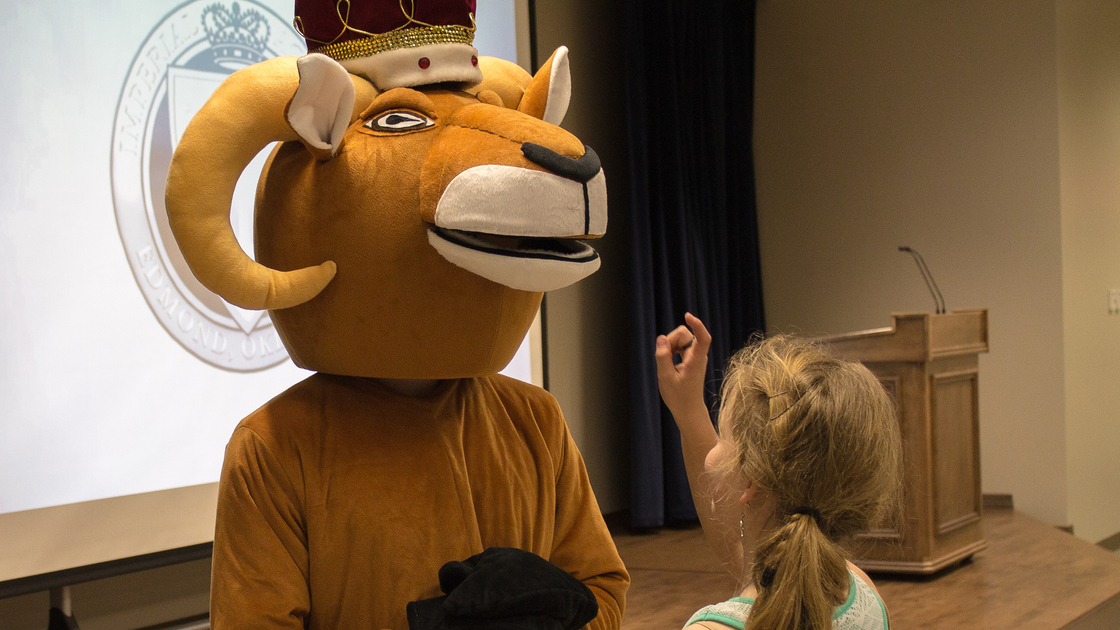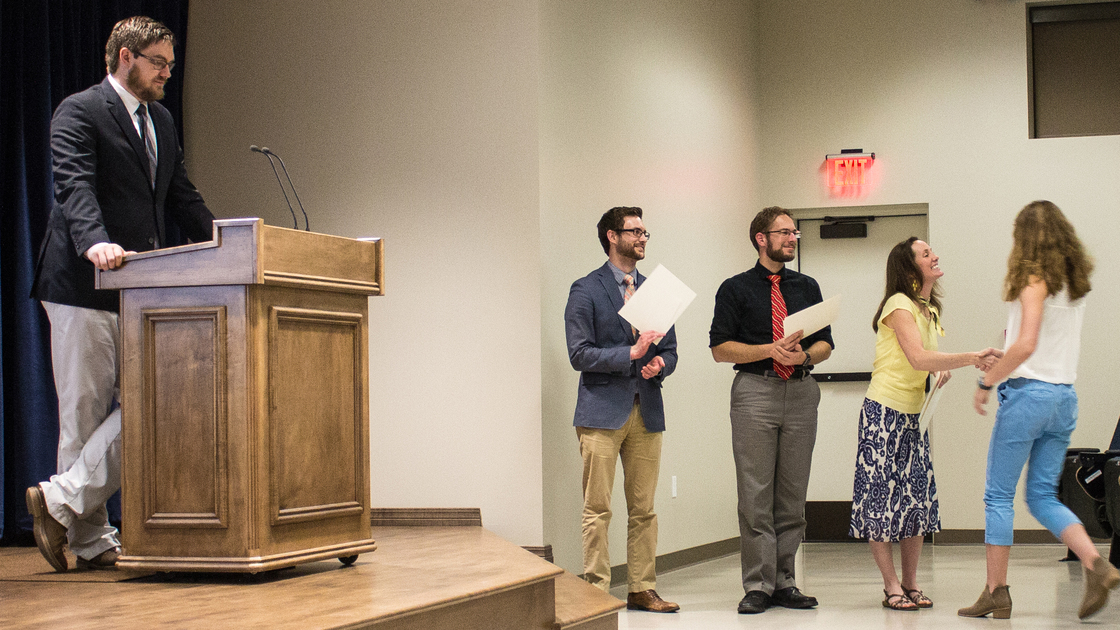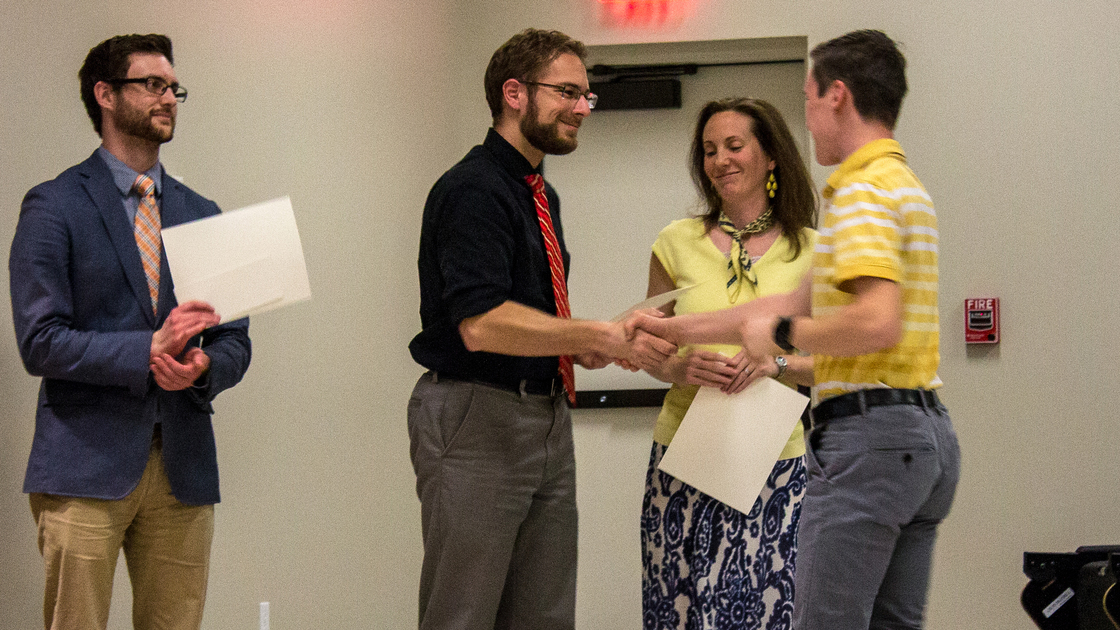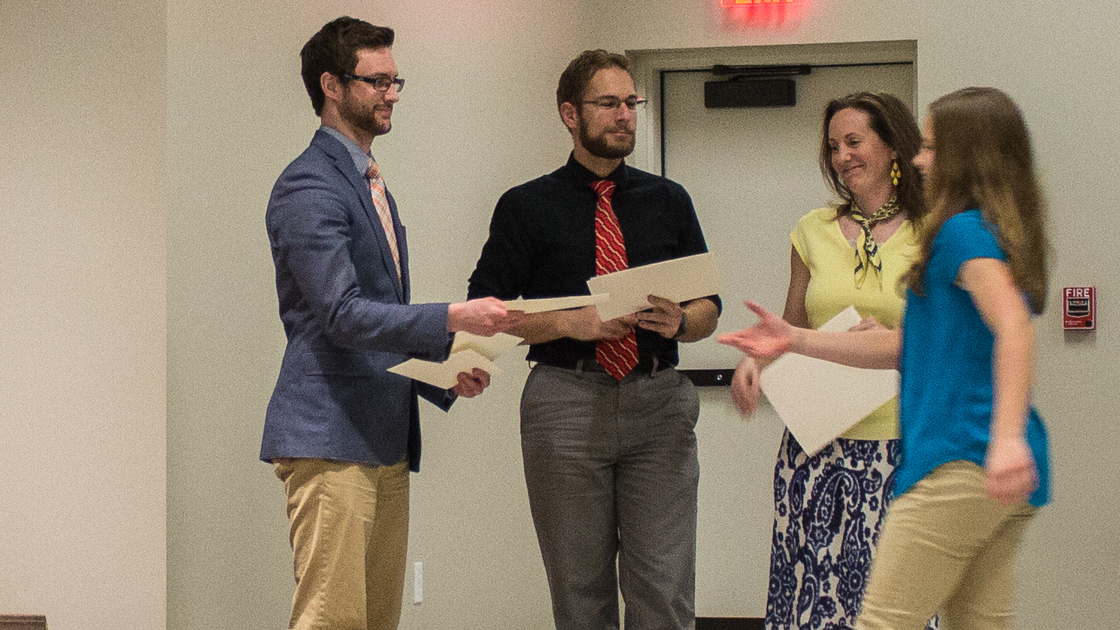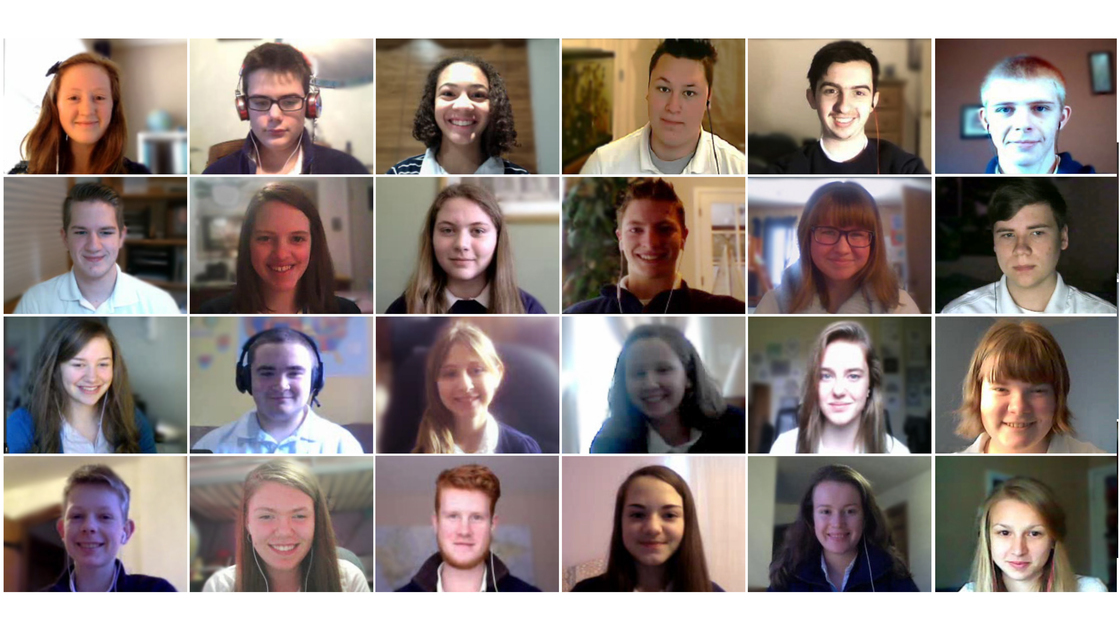EDMOND—Imperial Academy students, family members and teachers observed students’ scientific findings regarding plant growth, music’s mental effects, the process of digestion, and other phenomena on February 23 at Imperial Academy’s second annual science fair. About 40 people came to the Dwight Armstrong Performing Arts Conservatory to view homemade videos from 34 local and online science students from ninth grade to 11th.
Online students watched a livestream of the event, which was organized by Imperial Academy science instructor Sarah Evans and included shortened versions of each student’s five- to seven-minute videos either demonstrating a scientific principle or testing a hypothesis.
In her video, sophomore Zoe Hilliker tested the maze-running abilities of mice after exposing them to either classical music or heavy metal. She said her favorite part of the experiment was “playing with the mice,” which she gave unique names including Mao Tse Tung, Methuselah, and Chuck Norris. The crowd in the auditorium snickered as they watched sophomore Micah Turgeon mimic the entire digestive process using beans, oats and liquids representing acids and enzymes; he accented his video with “ew” sound effects. Local sophomore Leah Hyde tested several types of homemade fuels to see which burned the fastest and brightest, displaying her test results after an intense nasa-themed tribute.
Freshman Jude Flurry and Washington junior Jared Schow both experimented with super-cooled ice, volatile water that has remained liquid well below the typical freezing point but will freeze at any significant disturbance. Schow showed the water freeze after it was jostled. Flurry did not have time to get the water bottle in front of the camera before the water froze and instead recorded the humorous reactions of himself and his family to the water’s change to a solid.
Indiana sophomore Dustin Hochstetler’s video showed a time-lapse of the 35 days he spent growing lima beans to test how well the plants grew when watered with well water, boiled well water, or reverse-osmosis water. Freshman Sam McKoy constructed a penny battery to power his calculator. Junior Vienna Flurry heated up different proteins (eggs, milk and hair) to see how they reacted. Illinois junior Reagan Anderson captured moving objects on camera using a slow shutter speed. Ohio sophomore David Watts determined the amount of electrolytes in common drinks—orange juice had the most, several places above Powerade and Gatorade.
Recovering from an ankle injury, local sophomore Jordan Saranga explained how bones heal over, using Styrofoam and duct tape to demonstrate. Scott Heerma poked a lighter through various sized holes at the top of mason jars to see how well the methanol inside burned based on how the circumference of the hole changed the methanol’s access to oxygen. Junior Zechariah Henderson, who conducted an experiment on the reaction of different metals to hydrochloric acid, said his favorite part of making the video was finishing it. “It’s just satisfying to see all the parts come together,” he said.
Evans and fellow science instructors Ben Young and Dan Arnfield awarded certificates and gift cards to winners of “Best Science” and “Best Presentation” in each grade. Jude Flurry, Dustin Hochstetler and Zechariah Henderson won Best Science. Leah Hyde, Zoe Hilliker and Vienna Flurry won Best Presentation.
Last year’s science fair included a “flying pig,” rocket launches, a homemade Tesla coil, and a phantom limb experiment. Other annual and semiannual events on the Imperial calendar include field trips, recitals, a musical and the Imperial Academy Land Run. Evans says she hopes to make the fair an annual tradition as well.
